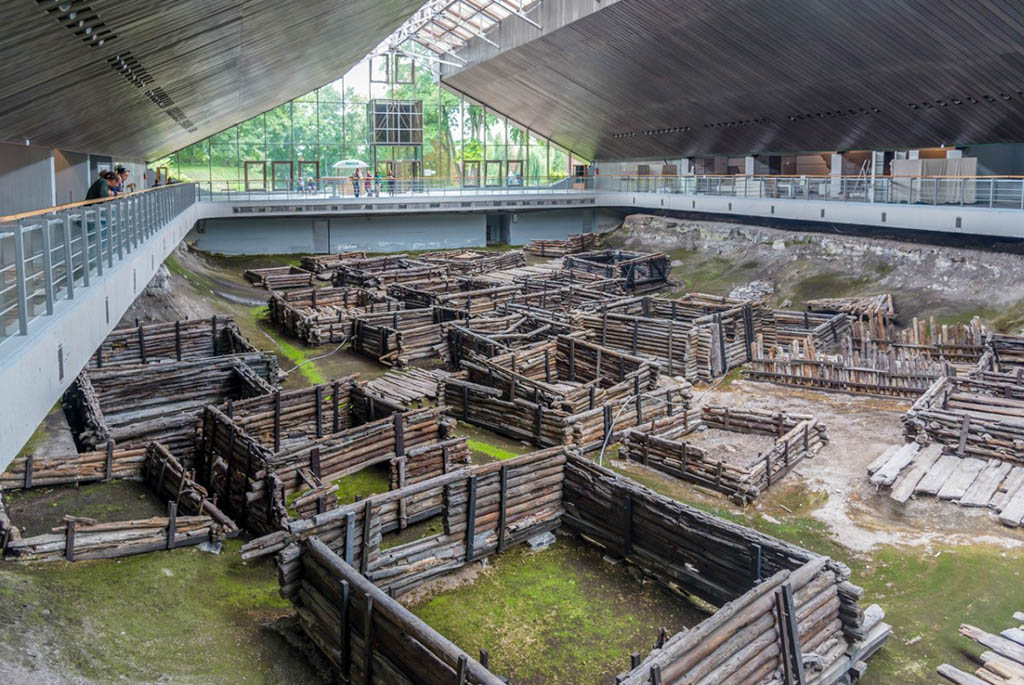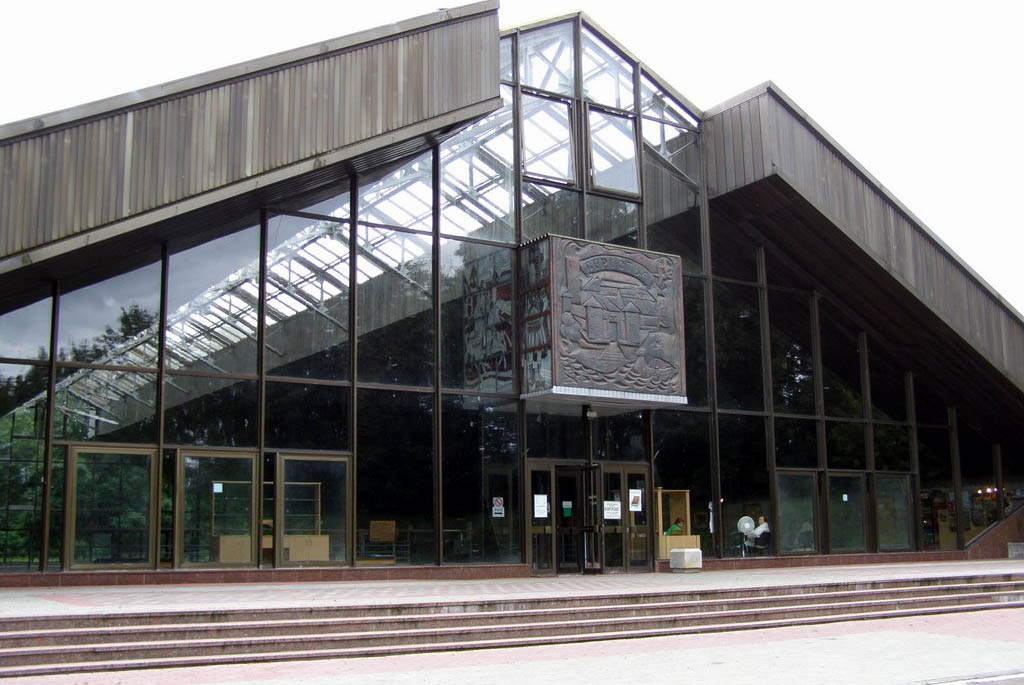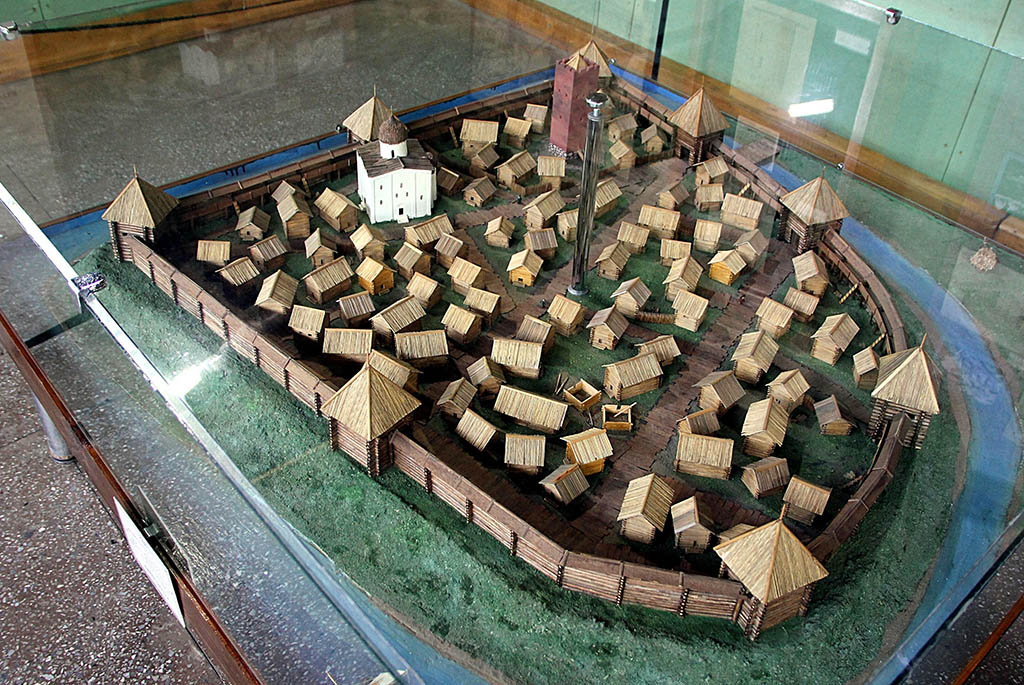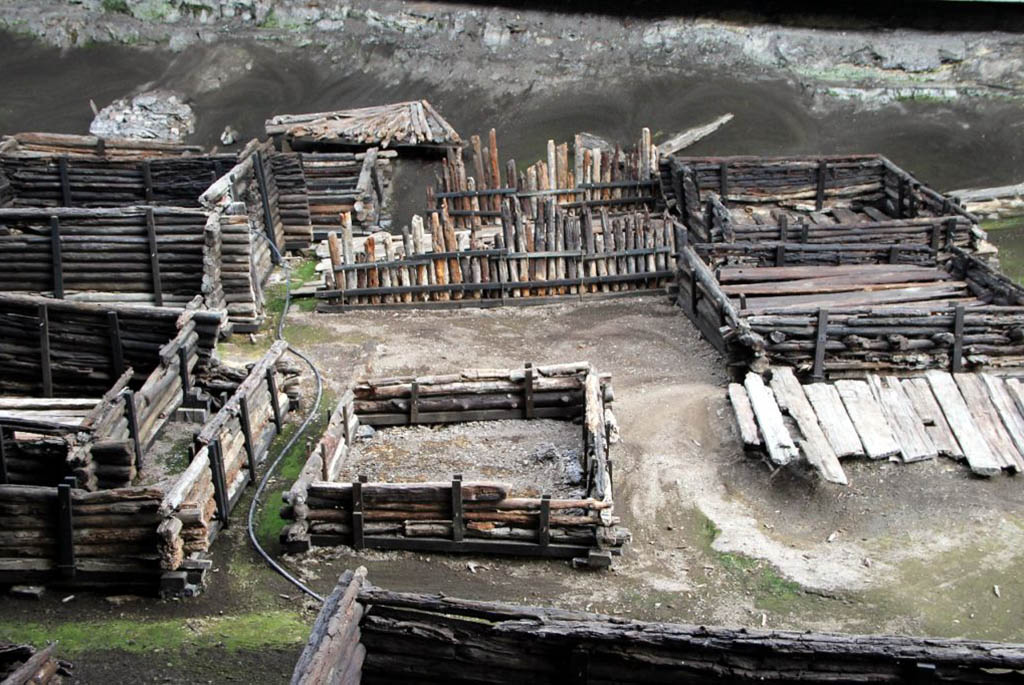It is located on the territory of the Volyn fortification of the Brest Fortress. Once upon a time, there was an ancient settlement populated by the Dregovichs in this place.
In the 20th century, Belarusian scientists attempted to determine the original location of the settlement which later grew into the town of Berestye. In the second half of the 1960s, the researchers' efforts were crowned with success. On a patch of land formed by the Western Bug and the left branch of the Mukhavets River, an ancient citadel was discovered. At the excavation site of the settlement, about 43,000 various artifacts were found, testifying to the fact that life was bustling here in the 12th-13th centuries - there was trade, craft activities, and agriculture were developing.
Thanks to the high humidity and the peculiarities of the local soil, wooden buildings, tools, jewelry, clothing samples, and other archaeological finds have been wonderfully preserved. Based on the artifacts found, it was decided to organize a museum telling about the life of the ancient inhabitants of Berestye. Near the excavation site, a large glass-concrete pavilion was erected, where the found historical artifacts were transferred. The exhibits that became part of the displays were carefully conserved by specialists.
In the spring of 1982, the "Berestye" Museum opened its doors to the first visitors. For more than 40 years now, interest in this institution has not diminished - each year, the museum welcomes about 60,000 visitors.
What is the "Berestye" Archaeological Museum like?
The museum pavilion, with an area of 2,400 square meters, is divided into thematic zones dedicated to the history of Berestye’s origin, the planning and development of the settlement, Slavic crafts, the reconstruction of a 13th-century dwelling, the main activities of the ancient Slavs, their daily life, and culture.
The museum’s collection includes:
- Household items – keys, a foot mortar, razors, a boxwood comb with images of the Slavic alphabet, and more;
- Samples of footwear;
- Hunting and fishing gear;
- Bones and skulls of domestic animals;
- Utensils – knives, spoons, bowls, ceramic vessels;
- Fabric fragments;
- Craft and agricultural tools – weaving and pottery looms, reels, a flax crusher, chisels, axes, drills, etc.;
- Children's toys;
- Fragments of weapons;
- Women's jewelry – pendants, bracelets, beads, rings, earrings;
- Chess pieces;
- Cult objects.
The most impressive element of the exhibition is the 13th-century archaeological excavation, located in the center of the museum pavilion. It represents a part of a reconstructed craft quarter, consisting of 28 residential and economic log buildings made of coniferous trees. Here, you can see urban streets paved with wood, palisades, remnants of clay ovens.
In addition to artifacts found during excavations, the museum also features modern exhibits. For example, a model of ancient Berestye or a residential building created after a medieval East Slavic dwelling. The log cabin allows visitors to understand what the homes of the settlement's inhabitants looked like both outside and inside.
The "Berestye" Archaeological Museum provides a complete picture of the domestic, economic, and cultural life of a large East Slavic settlement of the 13th century. The museum staff conducts thematic and overview tours, historical quests for schoolchildren, organizes virtual tours of the archaeological excavation, and viewings of 3D panoramas of ancient Berestye. Visitors can use audio guides in Russian, Belarusian, English, Polish, and Chinese.
The museum is located next to the Kholm Gate of the Brest Fortress. From the Brest railway and bus stations, you can easily get here by public transport.





